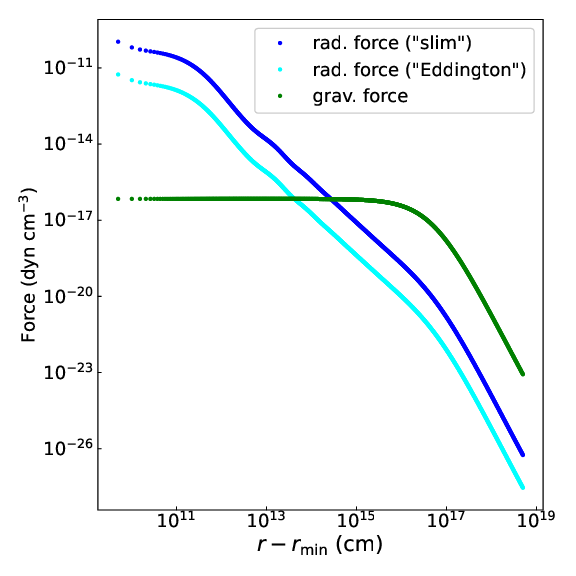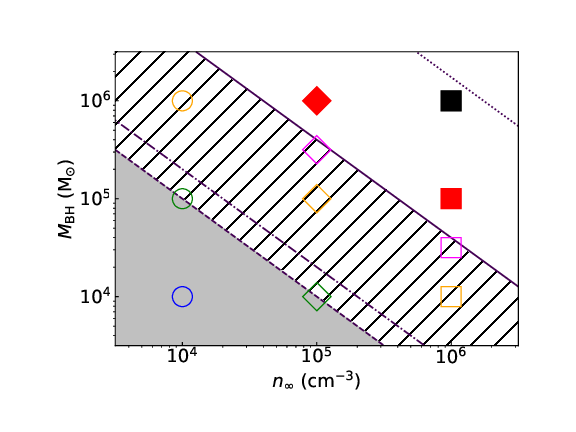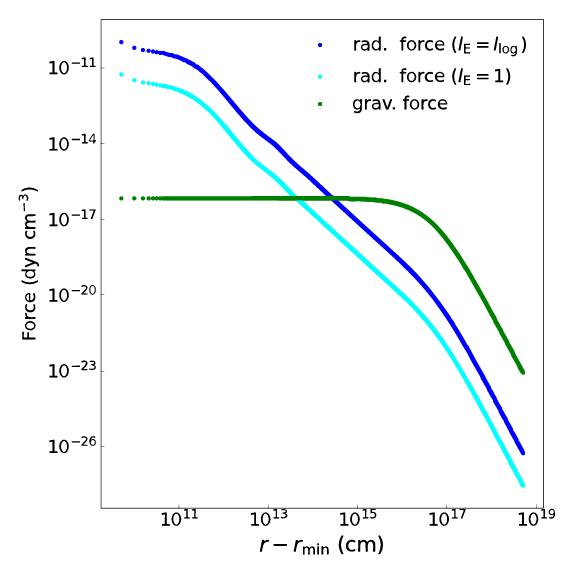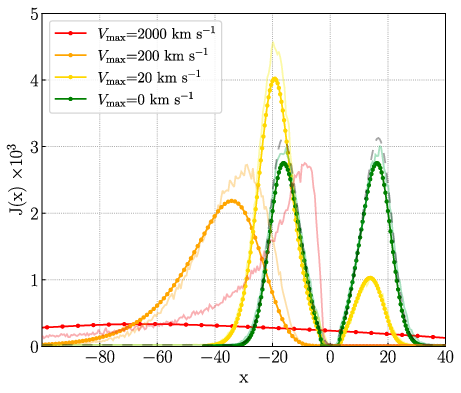Impact of the Lyα radiation force on super-Eddington accretion on to a massive black hole
Mushano, Takuya, Ogawa, Takumi, Ohsuga, Ken, Yajima, Hidenobu, & Omukai, Kazuyuki
Abstract
The viability of super-Eddington accretion remains a topic of intense debate, crucial for understanding the formation of supermassive black holes in the early universe. However, the impact of the Lyα radiation force on this issue remains poorly understood. We investigate the propagation of the Lyα photons and evaluate the Lyα radiation force within a spherically symmetric accreting H I gas on to the central black hole. We solve the radiation transfer equation, incorporating the destruction processes of Lyα photons through two-photon decay and collisional de-excitation. We find that the Lyα photons, originating in the H II region around black holes, suffer from multiple resonance scattering before being destroyed via two- photon decay and collisional de-excitation. Hence, the Lyα radiation force undergoes a significant amplification, surpassing gravity at the innermost section of the H I region. This amplification, quantified as the force multiplier, reaches approximately 130 and remains nearly constant, regardless of the optical depth at the line center, provided the optical thickness of the flow is within the range of 1010!-!14. The requisite lower limit of the product of gas density and black hole mass to realize super-Eddington accretion is found to be in the range (2! -!40) × 109 M⊙cm-3, which is a few to tens of times larger than the minimum value obtained without accounting for the Lyα radiation force. The pronounced amplification of the Lyα radiation force poses a substantial challenge to the feasibility of super-Eddington accretion.






 和 英
和 英